Kolossi Castle in Cyprus – A Hidden Gem
Most people don’t realize that Cyprus has many Castles to explore. Kolossi Castle in Cyprus, while small compared to others across Europe, is charming and remarkably intact. Visiting Kolossi Castle only takes a couple of hours, but you should dedicate a few hours if you visit Cyprus, and here’s why.
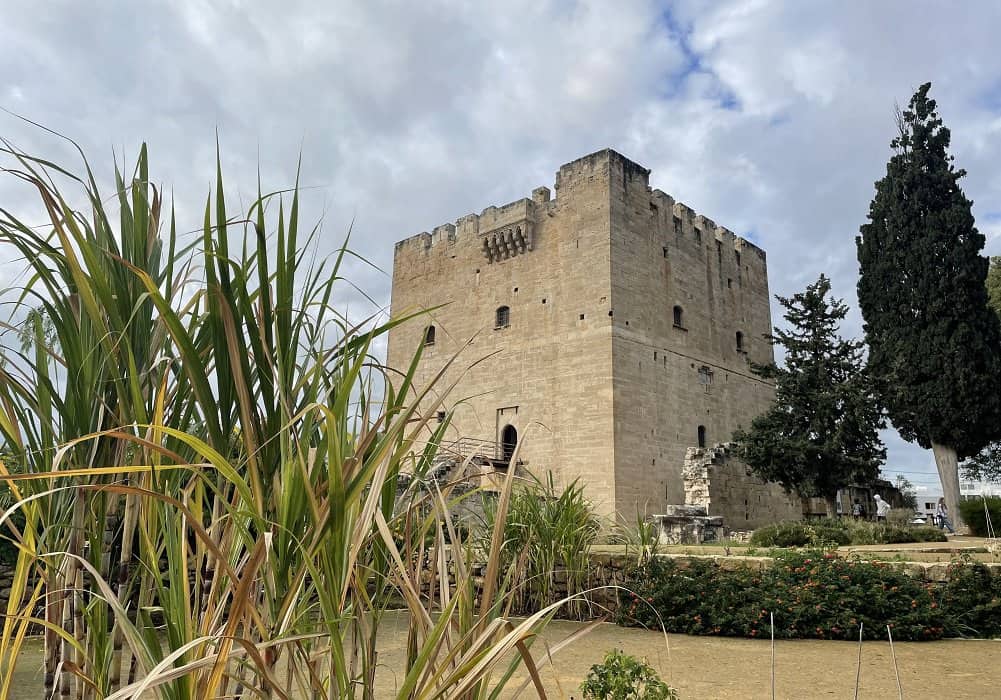
This post may contain affiliate links. Please read our disclosure and privacy policy for more information.
History of Kolossi Castle in Cyprus
Kolossi Castle is a medieval castle located in Kolossi, about 11 kilometers west of Limassol, on the island of Cyprus. The castle was built in the 13th century by the Knights of the Order of St. John of Jerusalem, also known as the Knights Hospitaller, and it played an essential role in the history of Cyprus.
During the Middle Ages, Kolossi Castle served as the headquarters of the Knights Hospitaller, who used it as a stronghold to defend the southern coast of Cyprus from enemy attacks. The castle was also an important center of sugar production, as the knights had established sugar plantations in the surrounding area. The sugar produced in Kolossi was exported to Europe, which was in high demand, bringing great wealth to the Knights Hospitaller.
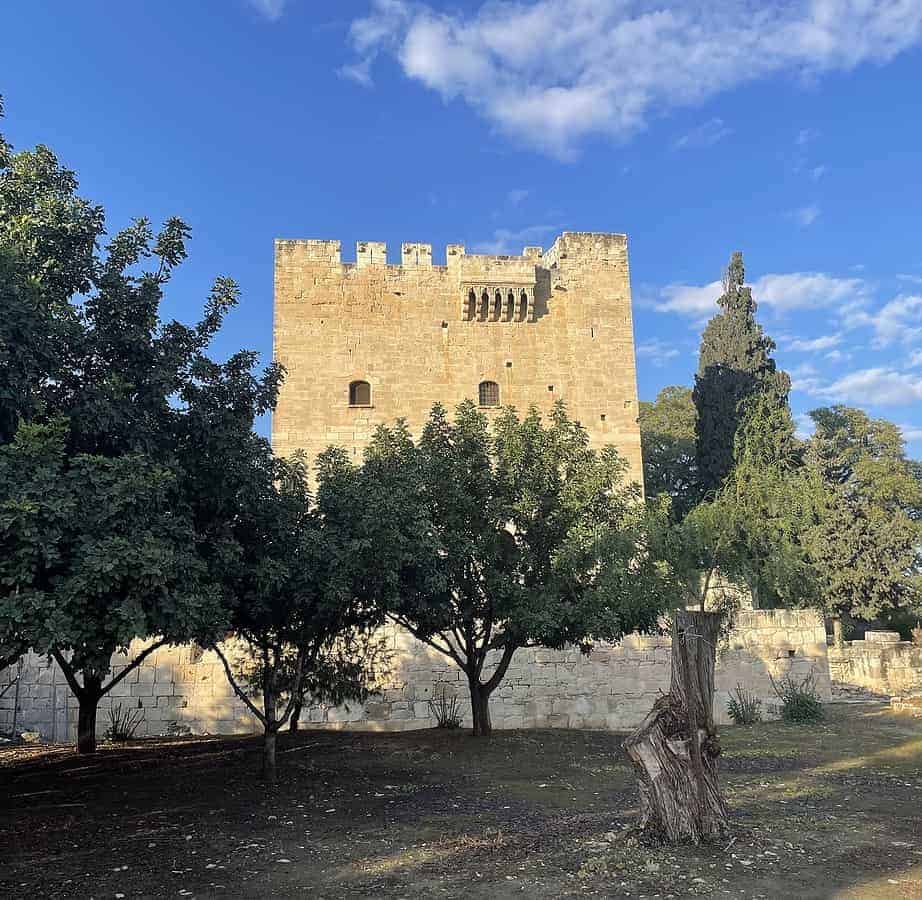
In the 14th century, the castle was sold to the Lusignan dynasty, which ruled Cyprus then. From here, on to the Venetians, who used it as a storage facility for salt. During the Ottoman period, the castle fell into disrepair.
In the 20th century, the Department of Antiquities of Cyprus undertook extensive restoration work on the castle, and it was opened to the public as a museum. Today, visitors can explore the castle’s interior and learn about its history and significance.
Kolossi Castle is a fine example of medieval military architecture, with its thick walls, towers, and moat. It is also a testament to the economic power of the Knights Hospitaller and its role in the development of Cyprus.
About the Lusignan Dynasty
The Lusignan dynasty was a medieval dynasty that ruled the Kingdom of Cyprus from 1192 to 1489. The dynasty was founded by Guy of Lusignan, who was crowned King of Cyprus after being ousted as King of Jerusalem by his brother-in-law, Conrad of Montferrat.
Under the Lusignan dynasty, Cyprus became an important center of trade and commerce in the Eastern Mediterranean. The island also became a haven for artists, writers, and scholars and a learning center.
In the early 10th century, the Lusignan family originated in Poitou (western France). By marrying Sybilla of Jerusalem, a cousin of Richard the Lionheart, Guy de Lusignan became king of the crusader state of Jerusalem in the late 12th century. Nonetheless, the barons deposed Guy de Lusignan after Sybilla’s death when his claim to the Jerusalem crown weakened.
Guy de Lusignan

The Lusignan kings enjoyed patronizing the arts and constructing impressive Gothic-style churches and palaces. They were also notable for their involvement in the Crusades, particularly in the Holy Land.
However, the Lusignan dynasty faced many challenges during its reign. The most significant was the island’s invasion by the Mamluks of Egypt in 1373, which led to a long decline and instability.
In 1489, the last Lusignan king of Cyprus, James II, was overthrown by the Venetians, who took control of the island. Despite this, the legacy of the Lusignan dynasty remains an integral part of the history of Cyprus and the wider region.
Touring Kolossi Castle
Kolossi Castle in Cyprus is tiny in comparison to castles like Neuschwanstein Castle. However, it’s homely and not jam-packed with Gothique architectural style artifacts. Some will bark at this, but it was one of the castle’s highlights for me. You get to imagine it in its raw form minus distractions.
Wandering around the castle captured my imagination. This castle would be move-in ready if functioning bathrooms and a kitchen were present. All that’s missing is some decadent art to dress the stone walls.
Today, the castle consists of a single three-story keep with an attached rectangular enclosure or bailey about 98 by 131 ft.
The Grounds
Unlike most castles, the grounds of Kolossi Castle are small, but they have traditional features like a moat, and there are ruins of a sugar cane processing plant from the 14th century.

The Sugar Cane Processing Plant
It originally consisted of three cores and auxiliary facilities, as well as the remains of a water mill and aqueduct (aqueduct) that once supplied the plant with water.
On the orders of Raymond Berenger, the Grand Master of the Hospitallers, the aqueduct was built between 1365 and 1374.
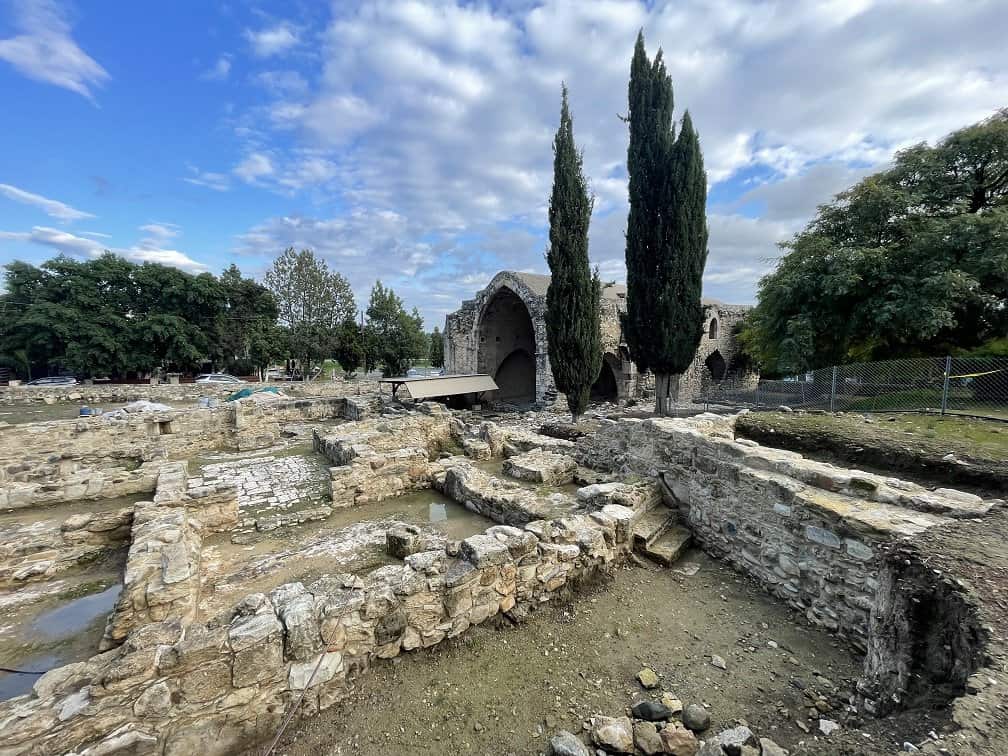
You can’t go inside the sugar cane plant but can see it from the grounds or the rooftop.

The Drawbridge
The drawbridge at Kolossi Castle is a unique feature that differentiates it from other regional castles. The drawbridge was designed to protect the court from invaders and could be raised or lowered as needed. Today, visitors to the castle can still see the drawbridge and learn about the history and significance of this impressive engineering feat.
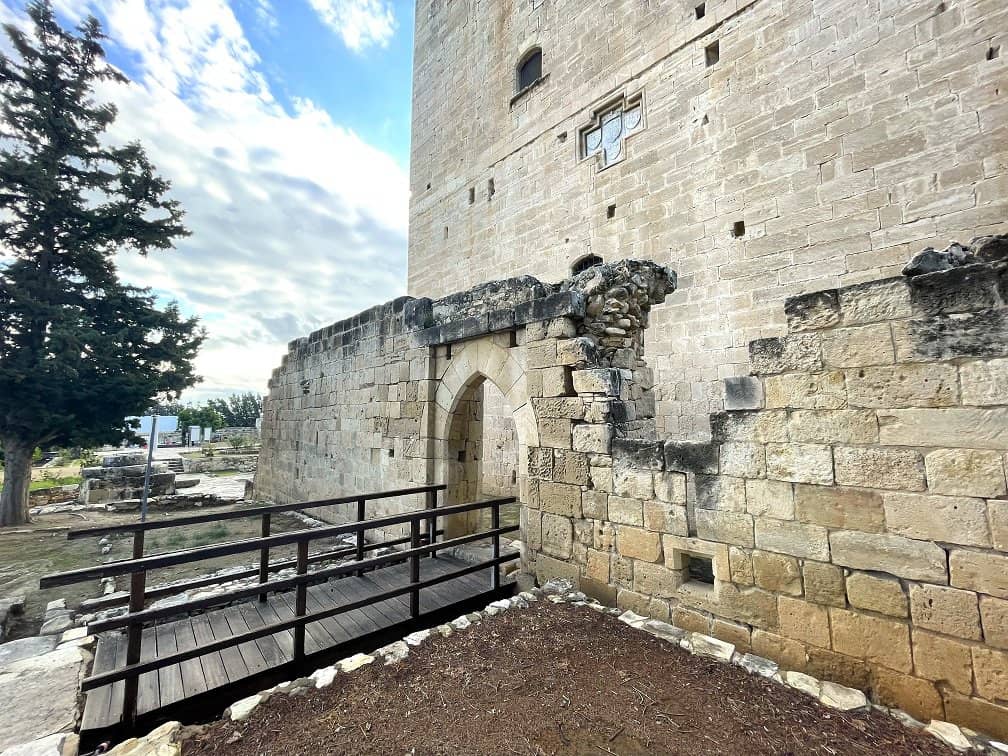
The Courtyard
The courtyard was the castle’s heart and was used for various purposes, including training exercises and social events. The courtyard is now in ruins, but visitors can still see the remains of the walls and the well that provided water for the castle.

Inside Kolossi Castle
Over the centuries, various rulers expanded and modified the castle, including the Lusignans, the Venetians, and the Ottomans.
Today, visitors can explore the castle’s ruins and imagine what life was like for the knights and their families. The ruins are open to the public, and guided tours are available.
The Keep
The keep is the castle’s central tower and is the most prominent feature of the ruins. Initially built in the 13th century, it was used as a defensive structure. The keep has four floors, and visitors can climb to the top for a stunning view of the surrounding area.
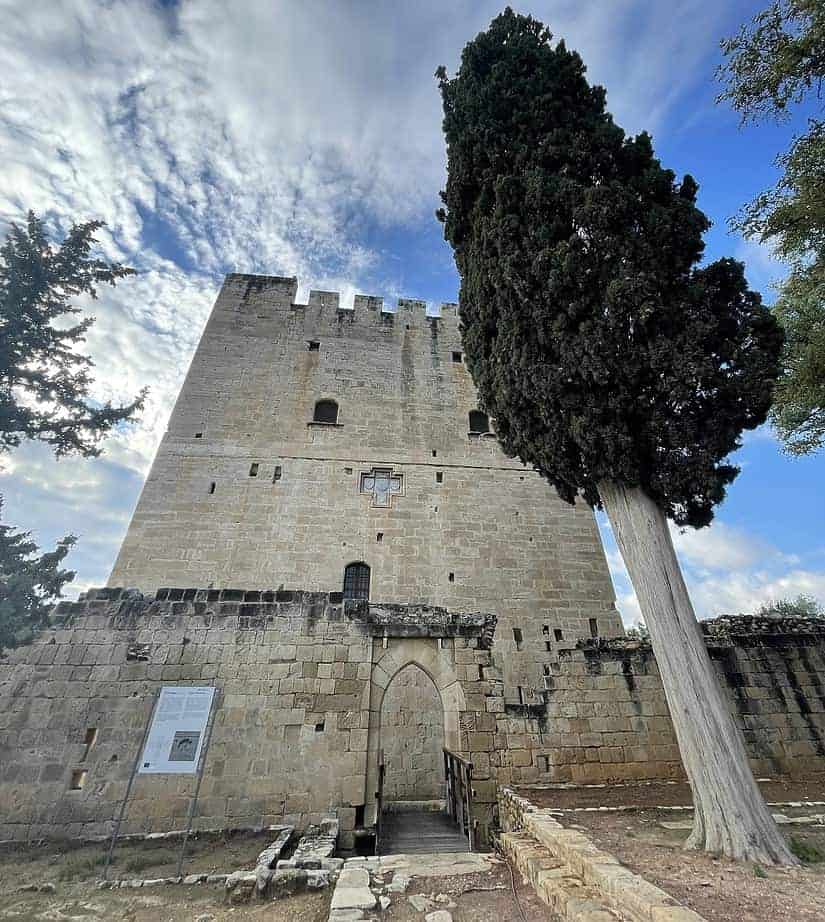
The Great Hall
The Great Hall was the central meeting place for the knights and was used for banquets and other events. The hall is no longer functional, but visitors can still see the entrance along with the ginormous fireplaces.
It’s probably my favorite room in the castle. The beautiful stone is ready and waiting for some color to make it pop.
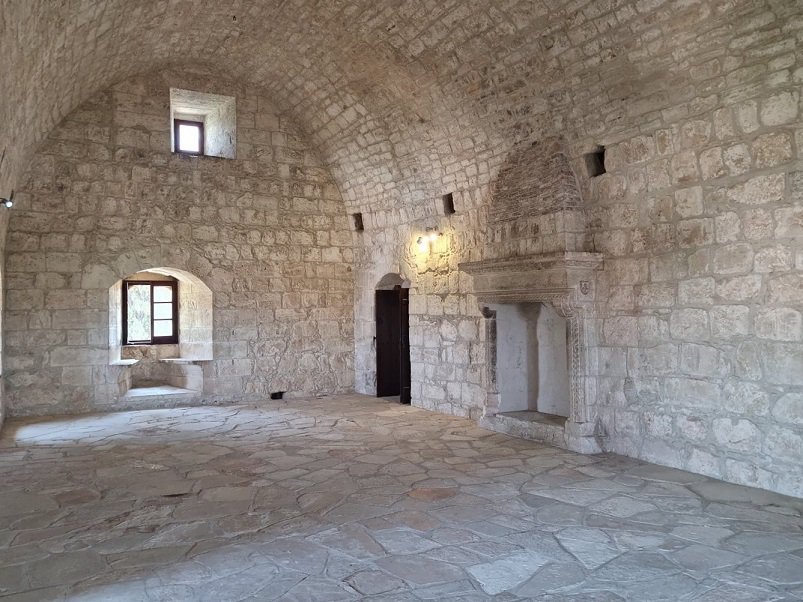
The Lower Level
Three equal spaces are divided by pointed arches on the first floor of Kolossi Castle’s tower. Rooms have a length of ~100 feet and are connected by arched passageways.
The first floor was likely used as storage for two of the three bedrooms because they have water cisterns.
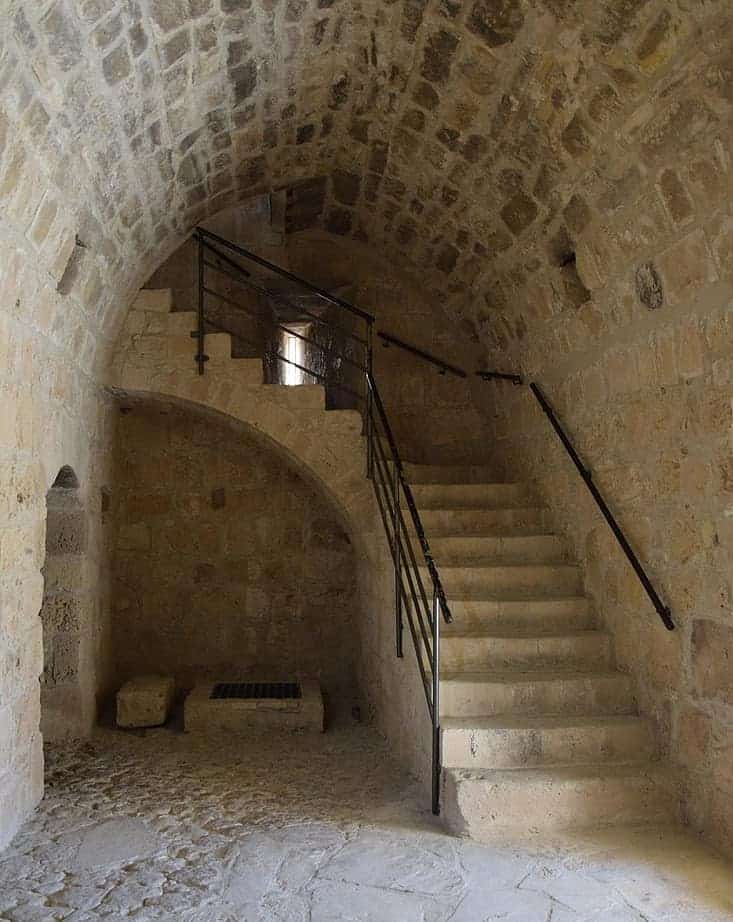
The Rooftop
As mentioned, Kolissi Castle has three stories—the main floor, the lower level, and the rooftop.
To access the rooftop, you must claim these stairs; there is no railing! These steps are no joke. Not only are they steep, but they are dangerously thin. This said it’s worth the climb for the views.
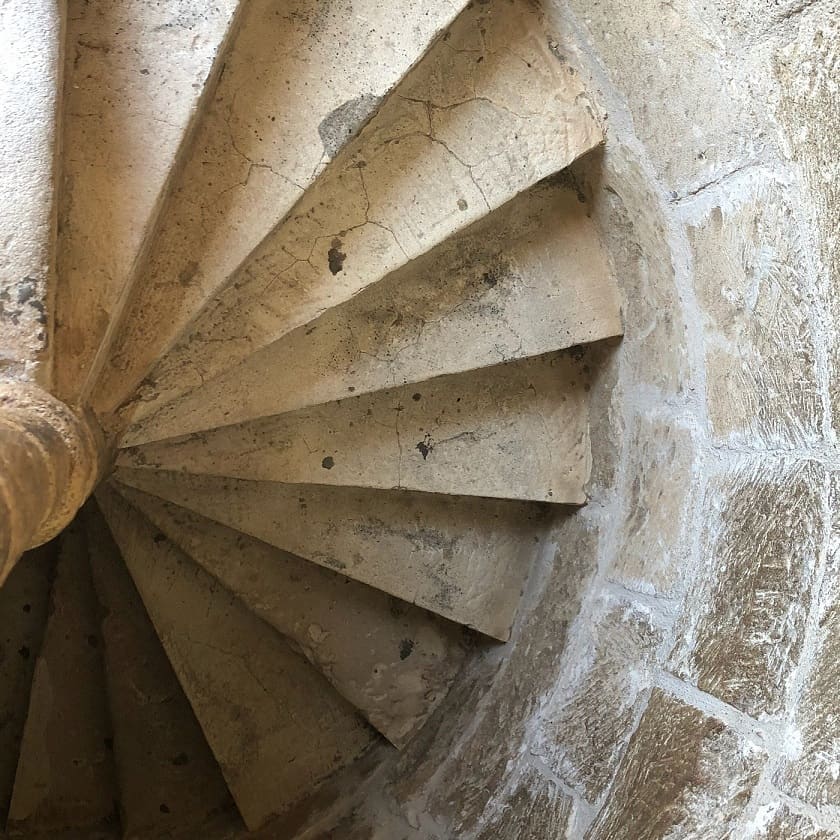

Location of Kolossi Castle
Address: MW8M+3J4, Λεωφόρος Αρχιεπισκόπου Μακαρίου Γ, Kolossi, Cyprus
14km west of Limassol on the road towards Paphos, Limassol, Cyprus.
FAQs
Who lived in Kolossi Castle?
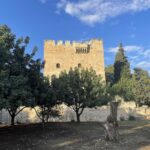
Along with the Templars’ property, the castle was given to the Knights of St. John in 1310. Despite moving their headquarters to Rhodes, the Grand Commanderie maintained its seat in Cyprus, at Kolossi, under their Grand Master, Foulques de Villaret.
How many rooms are in Kolossi Castle in Cyprus?
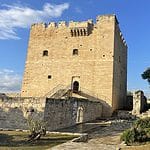
The castle has several rooms and chambers, including a great hall, a chapel, a kitchen, and storage rooms. However, the exact number of rooms in Kolossi Castle is unclear as different sources provide varying information.
When Was Kolossi Castle Built?
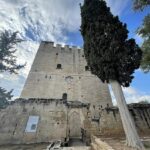
Initially built in 1210, the castle was home to the Grande Commanderie, the supreme military command of the Order of St. John of Jerusalem (Knights Hospitallers).
In 1454, the Hospitallers built the present castle under the command of Louis de Magnac, whose coat-of-arms can be seen on the castle’s walls.
How Much Does it Cost To Visit?
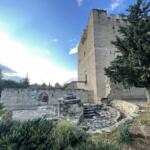
At the time of writing, the entrance fee is €2.50 per person. Ticket prices are subject to change; please check before visiting.
What is the highest castle in Cyprus?

The highest castle in Cyprus is Saint Hilarion Castle.
Closing Thoughts
Cyprus has more than twelve castles for enthusiasts to roam. Some of Cyprus’s most notable castles and fortresses include Kyrenia Castle, St. Hilarion Castle, Buffavento Castle, Kantara Castle, Larnaca Castle, Paphos Castle, and Limassol Castle. In addition, many other minor fortifications, watchtowers, and defensive structures are scattered throughout the island.
Kolossi Castle offers a fascinating glimpse into the past and is a must-see for anyone interested in history or architecture.
Kolossi Castle is my favorite because it is impeccable and move-in ready!
Looking for more posts on Cyprus? Start here:
- 20 Plus Things to Do in Cyprus
- Adonis Baths Waterfall in Cyprus
- Ancient Kourion: Cyprus’ House of Eustolios
- Can You Fly to North Cyprus?
- Cyprus Border Crossing Between North and South Cyprus
- North Cyprus – The Must-See Attractions!
- Salamis in Cyprus – The Ancient City Of Ruins In Famagusta
We participate in the Amazon Services LLC Associates Program, an affiliate advertising program designed to provide a means for us to earn fees by linking to Amazon.com and affiliated sites.
Brit On The Move™ Travel Resources
Ready to book your next trip? Use these resources that work:
Was the flight canceled or delayed? Find out if you are eligible for compensation with AirHelp.
- Book your Hotel: Find the best prices; use Booking.com
- Find Apartment Rentals: You will find the best prices on apartment rentals with Booking.com’s Apartment Finder.
- Travel Insurance: Don’t leave home without it. View our suggestions to help you decide which travel insurance is for you: Travel Insurance Guide.
- Want to earn tons of points and make your next trip accessible? Check out our recommendations for Travel Credit Cards.
- Want To Take A Volunteer Vacation or a Working Holiday? Check out the complete guide to how here!
- Want to Shop For Travel Accessories? Check out our Travel Shop.
Need more help planning your trip? Visit our Resources Page, which highlights the great companies we use for traveling.